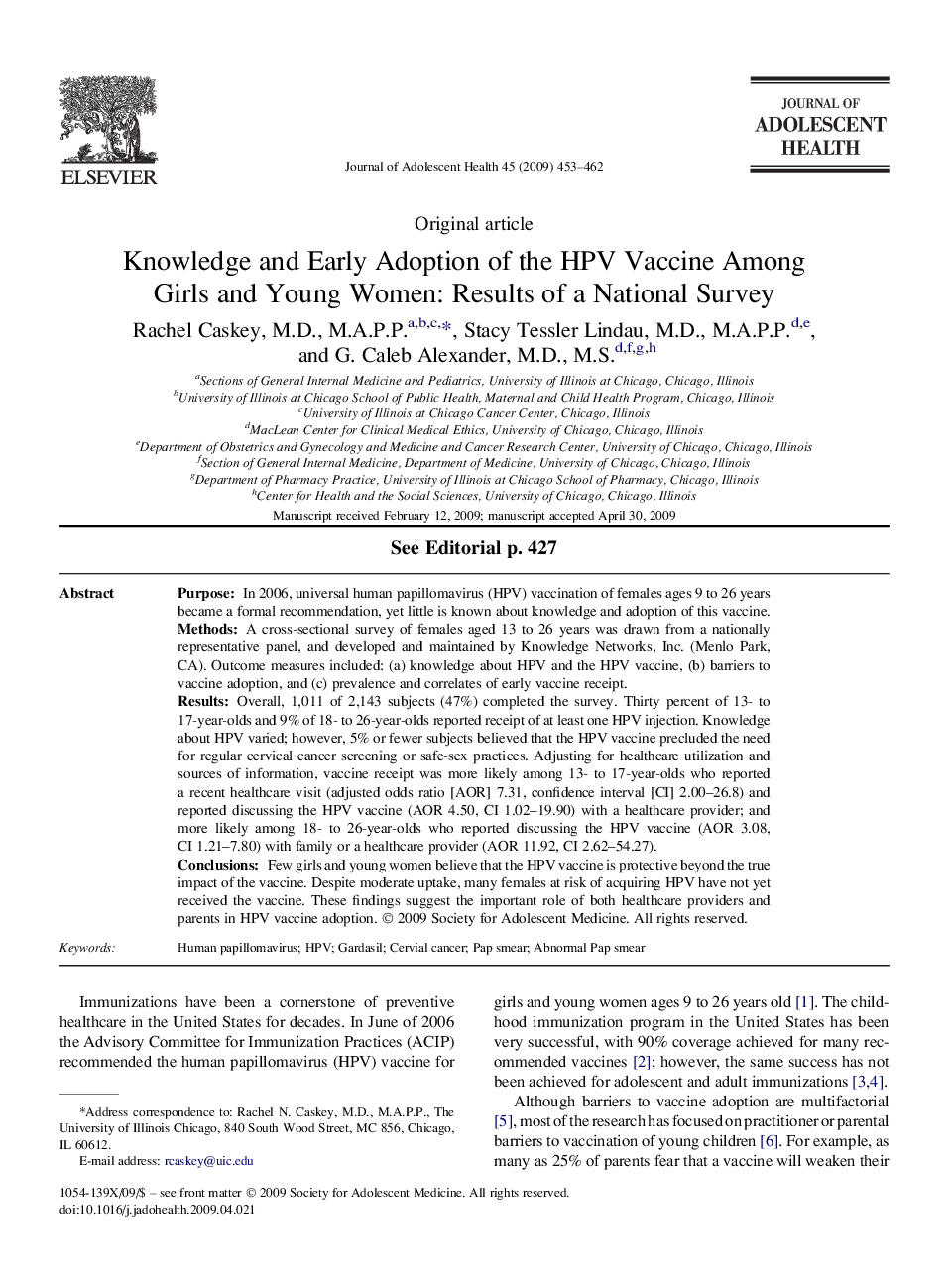| Article ID | Journal | Published Year | Pages | File Type |
|---|---|---|---|---|
| 1079361 | Journal of Adolescent Health | 2009 | 10 Pages |
PurposeIn 2006, universal human papillomavirus (HPV) vaccination of females ages 9 to 26 years became a formal recommendation, yet little is known about knowledge and adoption of this vaccine.MethodsA cross-sectional survey of females aged 13 to 26 years was drawn from a nationally representative panel, and developed and maintained by Knowledge Networks, Inc. (Menlo Park, CA). Outcome measures included: (a) knowledge about HPV and the HPV vaccine, (b) barriers to vaccine adoption, and (c) prevalence and correlates of early vaccine receipt.ResultsOverall, 1,011 of 2,143 subjects (47%) completed the survey. Thirty percent of 13- to 17-year-olds and 9% of 18- to 26-year-olds reported receipt of at least one HPV injection. Knowledge about HPV varied; however, 5% or fewer subjects believed that the HPV vaccine precluded the need for regular cervical cancer screening or safe-sex practices. Adjusting for healthcare utilization and sources of information, vaccine receipt was more likely among 13- to 17-year-olds who reported a recent healthcare visit (adjusted odds ratio [AOR] 7.31, confidence interval [CI] 2.00–26.8) and reported discussing the HPV vaccine (AOR 4.50, CI 1.02–19.90) with a healthcare provider; and more likely among 18- to 26-year-olds who reported discussing the HPV vaccine (AOR 3.08, CI 1.21–7.80) with family or a healthcare provider (AOR 11.92, CI 2.62–54.27).ConclusionsFew girls and young women believe that the HPV vaccine is protective beyond the true impact of the vaccine. Despite moderate uptake, many females at risk of acquiring HPV have not yet received the vaccine. These findings suggest the important role of both healthcare providers and parents in HPV vaccine adoption.
